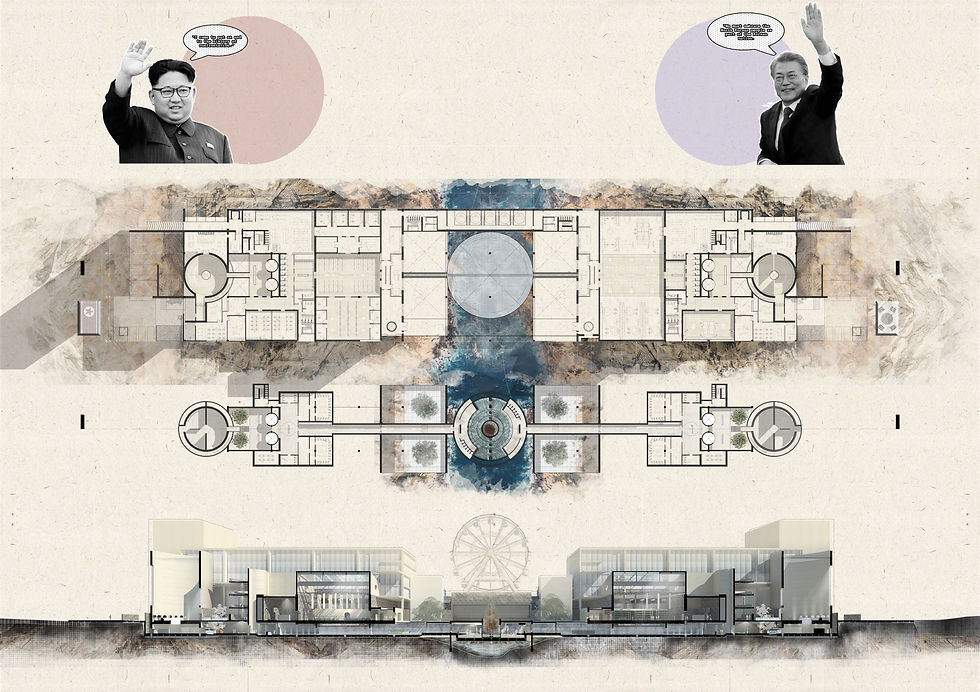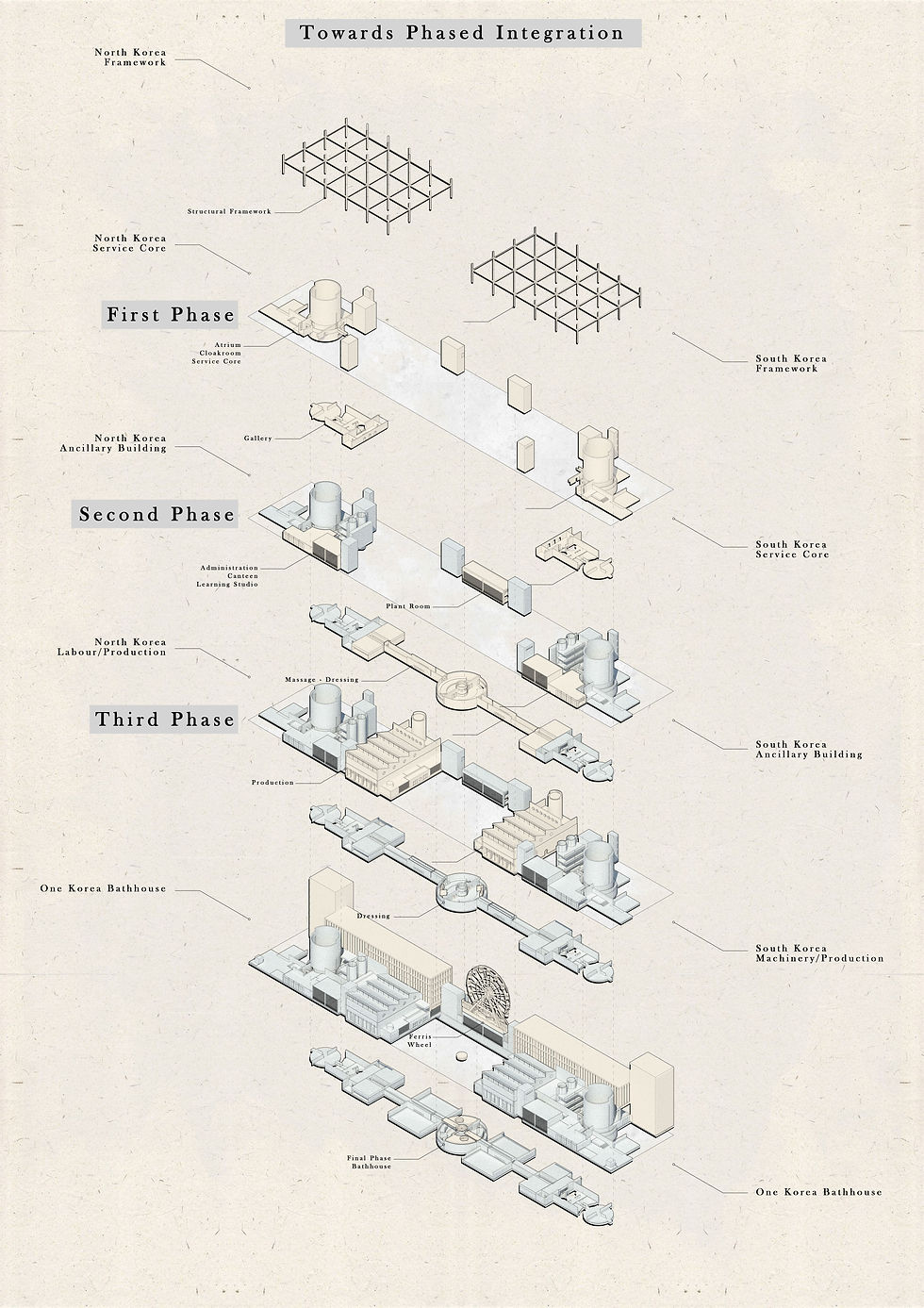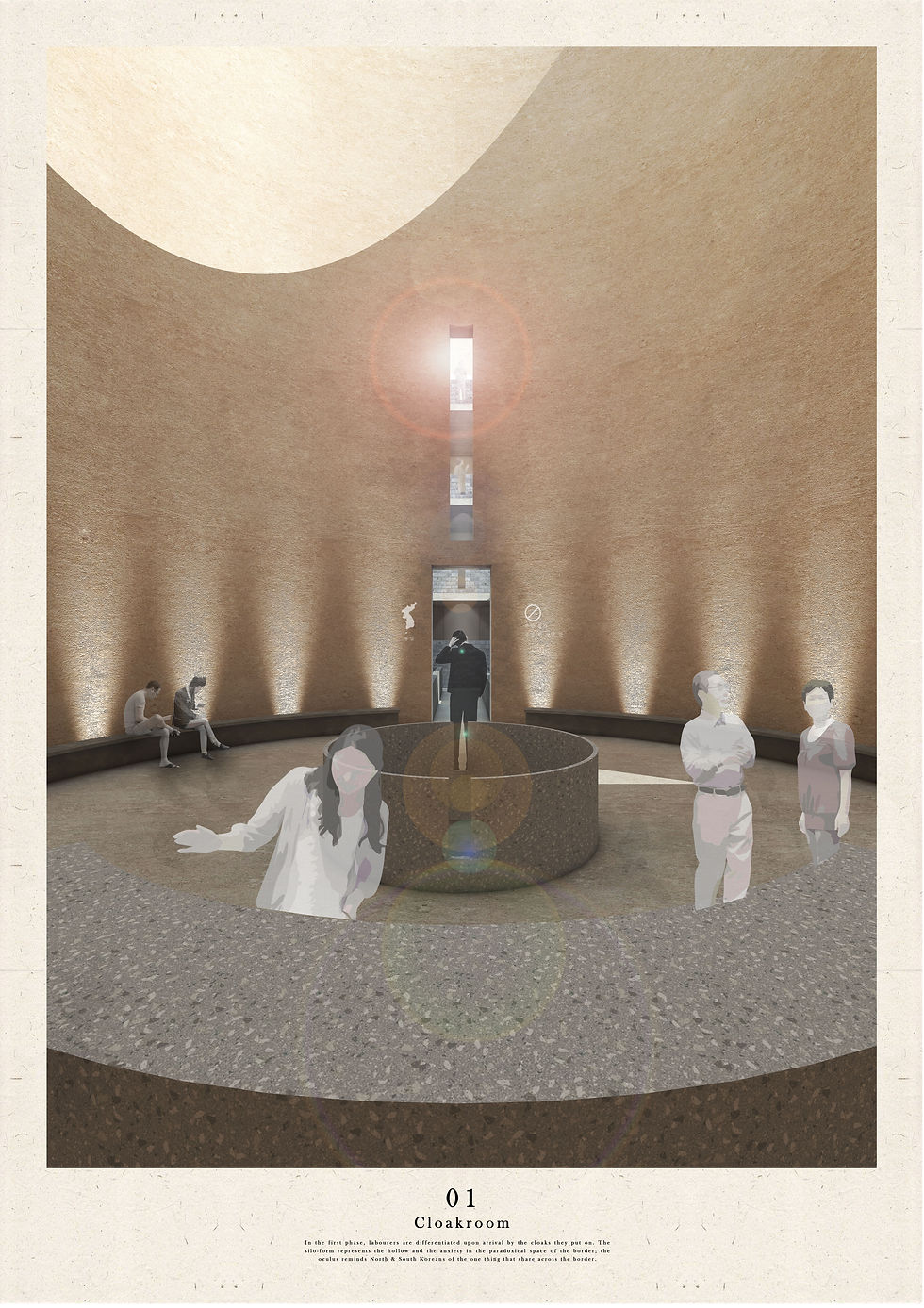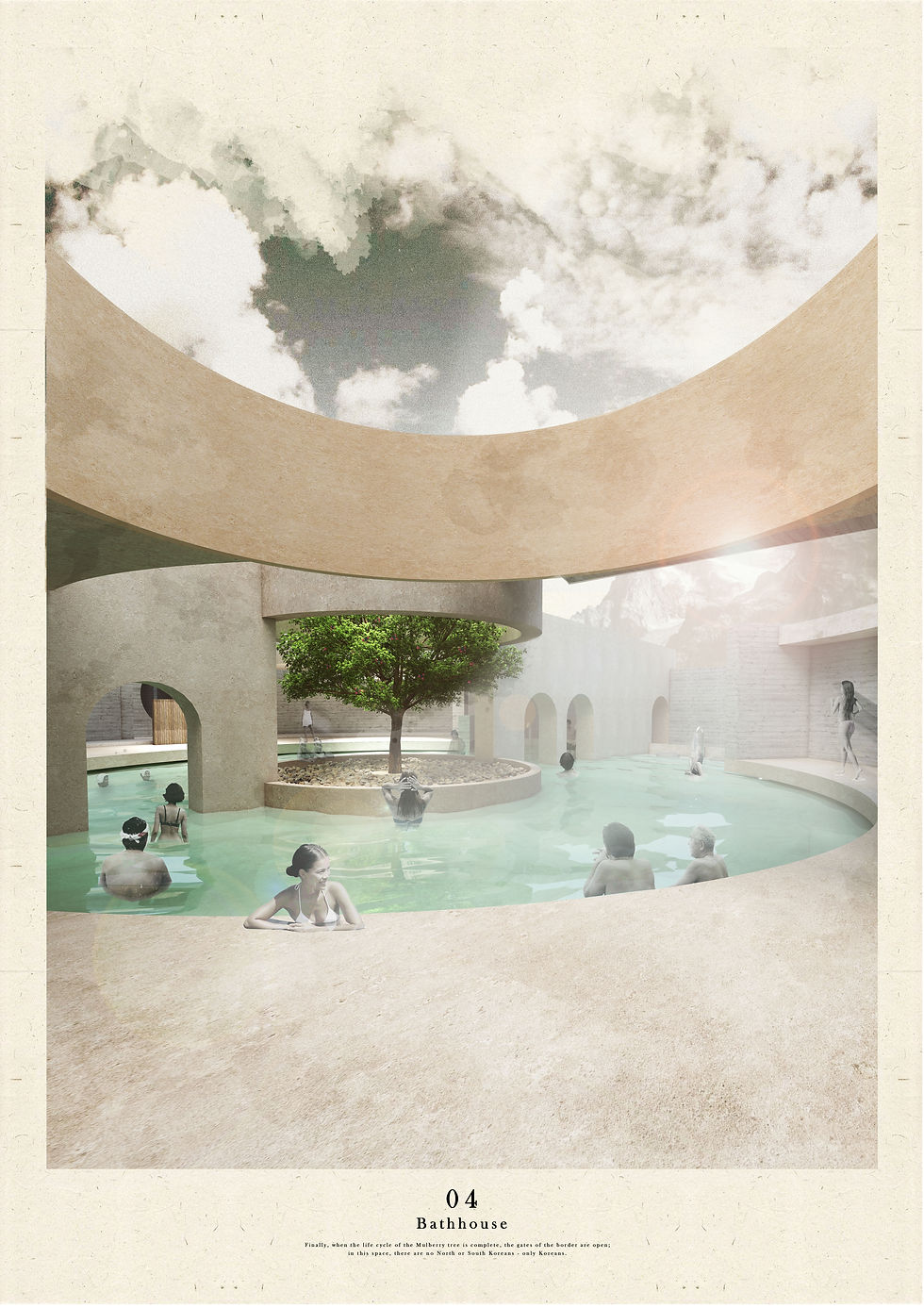Teh Ru Yen Joey
- Grad Show 2019
- May 3, 2019
- 3 min read
Updated: May 24, 2019
Border Repository: Transcending the North & South Korea Demilitarised Zone
Conservation and Heritage
Supervisor - Dr. Ho Puay Peng
A border is not a line. Although it may seem as such on the world map demarcating sovereignty, it is more than that. 65 years since the Korean War, the Demilitarised Zone (DMZ) has created an ideological and psychological barrier between two countries that once shared a homogenous past. However, the 2018 events surrounding the Korean Peninsula has proven to be an optimistic sign for the two Koreas to leave behind their past. With the inter-Korean conflict close to zero, the time to think about how a reunified Korea can coexist is now. How can architecture foster interaction between the two Koreas while preserving sovereignty across the border?
Advancing towards hopes of reunification, the two leaders identify the Imjin River, a tributary of the famous Han River, where thousands of soldiers were killed during the 1953 Korean War as the main axis of collaboration. Although divided by the bright red line drawn 65 years ago after the Korean War, here, North and South Korea is divided by a natural phenomenon – a river that both connects and disconnects North and South Korea. It is here in this space of paradox that both leaders make a commitment to change this physical line of fear, terror and anxiety as demilitarisation of the border begins. Watchtowers and guardhouses are converted to drone resource towers and carnival spaces.
The textile factory is divided into three different phases. In the beginning, the facility is envisioned to be divided into black and white spaces for North and South Koreans. As demilitarisation presses on, in-between interstitial spaces are interspersed across the border to allow for advanced collaboration. The spaces are configured in order of proxemics.
In the first phase, the facility breaks ground with the service cores, framework and ancillary offices. The sovereignty between two nations are preserved as they look across the river to their fellow counterparts.
In the second phase, ancillary buildings and service plant rooms are built. Production begins as they plant the seed of a Mulberry Tree on the border line in the centre of the building. A mulberry tree is a symbol seen in many old Korean temples and courtyards of Hanoks at a time where both Korea are still ruled by one King. It is also an ingredient used to make Hanji paper. As production begins, the sound of chattering of the labourers are heard in the bathhouse which at this point if time, is still divided by a frosted glass - although both in Korean, one can still differentiate distinctly between a North Korean and a South Korean.
Finally, in the last phase, as the Mulberry Tree is fully grown, walls are broken down and the frosted glass demarcating the border line diminishes as the borders are fully open.
Fear, as they both enter an atrium space where labourers are given black and white cloaks to differentiate themselves in the earlier phases. The silo-form represents the hollow and anxiety in the paradoxical space of the border - the oculus reminding both North Koreans and South Koreans of the one thing they share across the border.
Anxiety, as they travel down to the basement gallery space, a pause for deep reflection. Two silo-forms, two courtyards. They ponder as they foray deeper into the space. From afar, along the dark path, the Mulberry Tree peeks from a slit. At noon, the shadow forms a straight line connecting both North and South Korea land.
As they reach the final phase, as both borders are fully opened and the Mulberry Tree is fully grown, both Koreans can now interact among the mountains, the sun and the view they both share.
After 15 years of yearning and hoping, of being able to hear but not see, see but not touch, the Mulberry Tree is fully grown. The silent border was once terrorising; now it stands as a symbol of hope, a repository of collective memories shared by those who was there when it began, when it happened and when it finally opens. It is envisioned that this living building continues to grow even after many years ahead. And like the life cycle of the mulberry tree, this symbol is translated into the Ferris wheel - a symbol of peace and hope as both Koreans move in and out in a cyclical motion between the once bright red terrorising borderline.. Constantly rekindling hopes of eventual reunification. At least in this new place, there is no North Koreans and South Koreans - only Koreans.
Links & Contact:
Email - joeyteh.ry@gmail.com
Number - +65 9067 9380







Comments